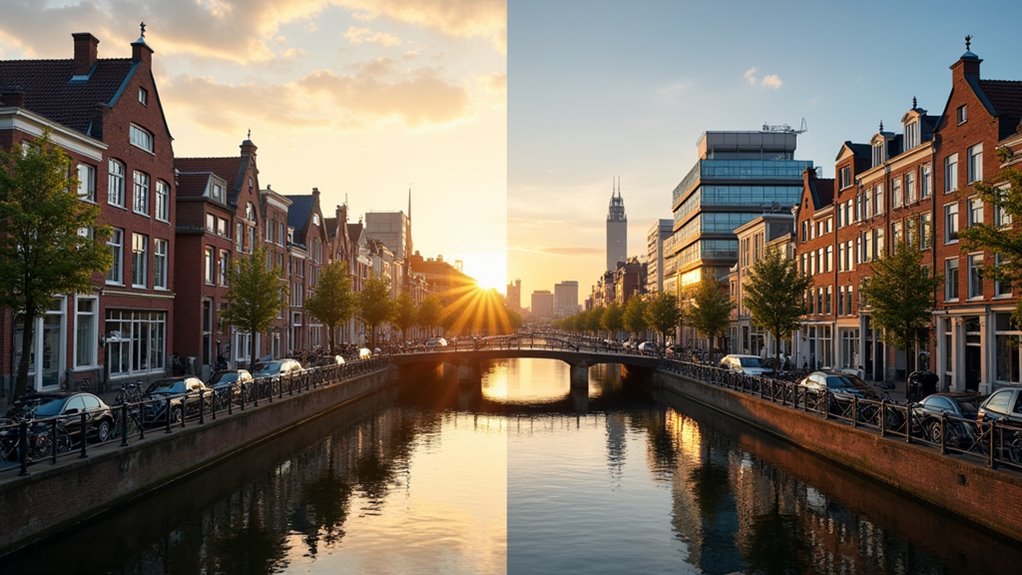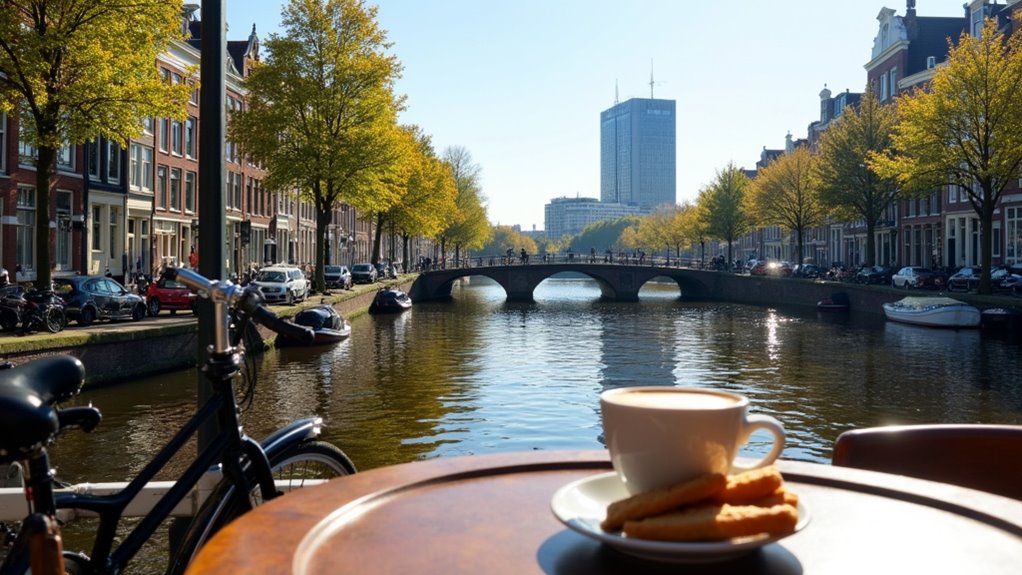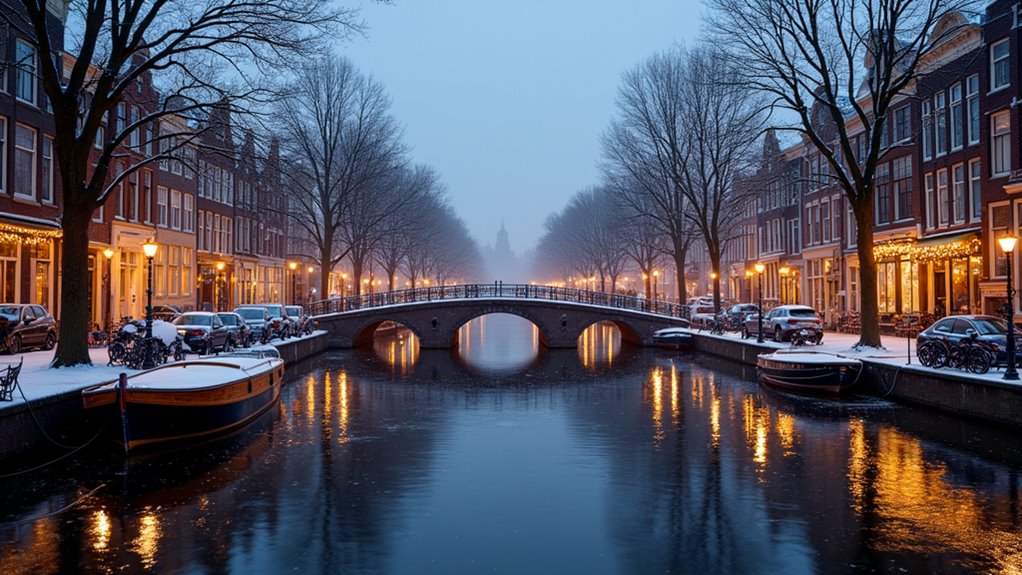Physical Address
304 North Cardinal St.
Dorchester Center, MA 02124
Physical Address
304 North Cardinal St.
Dorchester Center, MA 02124

Between these polar-opposite Dutch cities lies a critical choice for your Netherlands adventure – which matches your travel style?
Amsterdam and Rotterdam offer distinctly different Dutch experiences. Choose Amsterdam for historic canals, world-class art museums like the Rijksmuseum, and charming 17th-century architecture. Opt for Rotterdam if you prefer modern innovation, bold architectural statements, and a less touristy, more affordable experience. Amsterdam emphasizes traditional Dutch heritage while Rotterdam showcases contemporary urban design. Both cities are just 25-66 minutes apart by train, making it possible to experience these contrasting Dutch personalities during your visit.

When exploring the Netherlands’ urban centers, you’ll discover that Amsterdam and Rotterdam offer distinctly different cultural experiences through their museums and heritage sites.
Amsterdam embraces its Golden Age heritage with the Rijksmuseum (the country’s most visited museum) and the extensive Van Gogh collection. The Anne Frank House provides a moving window into WWII history, while the city’s Canal Ring Museum celebrates Amsterdam’s iconic waterways.
Rotterdam, rebuilt after WWII bombing, leans toward contemporary culture. The Kunsthal showcases innovative modern exhibitions, while the Maritime Museum honors the city’s port legacy. The COVID-19 pandemic caused significant visitor disruptions at museums nationwide, with institutions like the Eye Filmmuseum showing data gaps for 2020-2021.
Though temporarily closed for renovation, Museum Boijmans Van Beuningen remains a cultural landmark.
Both cities participate in national Museum Nights and heritage days, though Amsterdam’s museums typically focus on historical art while Rotterdam’s celebrate modernity and innovation. Some museums feature special exhibitions on traditional Swedish cuisine that showcase the culinary influences across Northern Europe.
While exploring the Dutch urban landscape, you’ll immediately notice the stark architectural contrast between Amsterdam and Rotterdam, two cities that tell fundamentally different design stories.
Amsterdam embraces its 17th-century heritage with picturesque canal rings, gabled houses, and a UNESCO-protected core that’s eminently walkable. You’ll cross 1,500 bridges spanning 100km of waterways, all while admiring carefully preserved facades. This distinct character mirrors how coastal destinations differ in other European countries like Cyprus, where Paphos and Protaras offer contrasting experiences.
Rotterdam presents the opposite experience—a bold modernist grid born from post-war necessity after the 1940 bombing. Here, architectural innovation defines the skyline: Cube Houses, Markthal, and the sleek Erasmus Bridge showcase experimental design. Rotterdam’s dramatic reconstruction has created a city that embodies a down-to-earth vibe influenced by its industrial port heritage.
Unlike Amsterdam’s height restrictions, Rotterdam reaches skyward with statement skyscrapers.
The cities’ layouts reflect their identities: Amsterdam’s compact, radial design promotes leisurely exploration, while Rotterdam’s dispersed districts showcase a future-focused urban vision.

Although both cities offer authentic Dutch experiences, Amsterdam and Rotterdam present dramatically different propositions for daily living. Rotterdam stands out as markedly more affordable, with overall costs about 10% lower than Amsterdam and rent for a one-bedroom apartment costing over $600 less monthly.
When considering daily life in these cities, note:
Public transport costs less in Rotterdam too, making daily commutes easier on your wallet. Like must-visit destinations worldwide, each city has its own atmosphere that influences daily life satisfaction. Grocery shopping is generally more economical in Rotterdam with items like milk being 10.1% cheaper than in Amsterdam.
Beyond everyday living costs, how you’ll navigate these Dutch cities shapes your experience substantially. Both Amsterdam (GVB) and Rotterdam (RET) offer extensive networks of buses, trams, and metros accessible via the OV-chipkaart payment system.
For inter-city travel, you’ve got excellent options. The Intercity Direct train whisks you between Amsterdam and Rotterdam in just 25 minutes (with supplement fee), while regular trains take about 66 minutes. The 9292 App provides comprehensive journey planning across all transport modes nationwide, including accessibility information and service disruptions.
Rotterdam’s public transport boasts lower per-kilometer costs than Amsterdam’s, though differences are minimal.
Both cities feature wheelchair accessibility, with braille and audio announcements throughout the network. If you’re considering other European destinations after your Dutch adventure, Danish transport offers similarly efficient systems with excellent accessibility features. For planning, use city-specific apps (GVB or RET) or Google Maps for seamless navigation.
Alternative travel options include buses, car-sharing, taxis, and bike rentals for shorter journeys.

Timing your visit to the Netherlands can dramatically impact your experience in both Amsterdam and Rotterdam. Both cities share similar weather patterns throughout the year, with summer bringing pleasant temperatures around 17°C and comparable rainfall.
Consider these seasonal highlights:
Winter delivers festive atmospheres in both destinations, with Christmas markets and cultural events, though some attractions may have reduced hours during the colder months.
Whether you choose Amsterdam’s storybook canals or Rotterdam’s bold reinvention, you’re stepping into a uniquely Dutch adventure. As different as siblings in the same family, each city offers its own flavor of Netherlands magic. Trust your travel instincts—Amsterdam if you crave classic charm, Rotterdam if modern energy speaks to you. The good news? They’re just a quick train ride apart if you can’t decide!